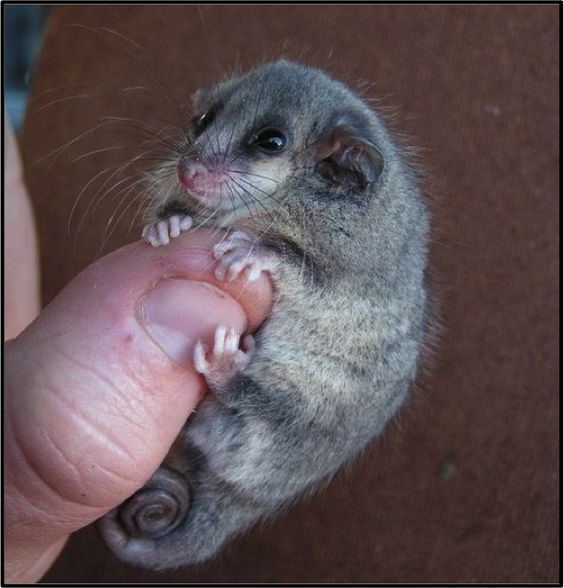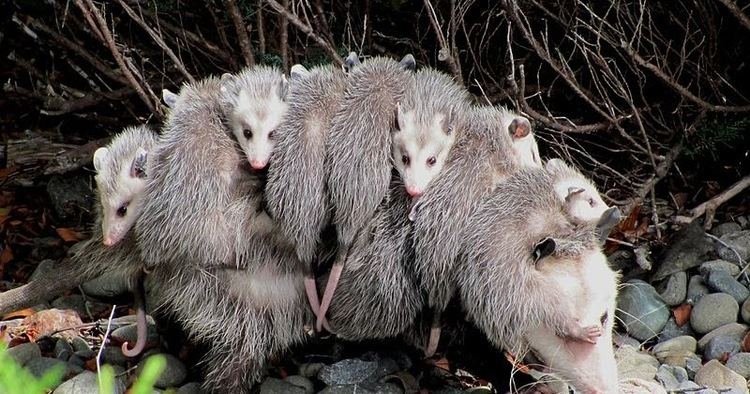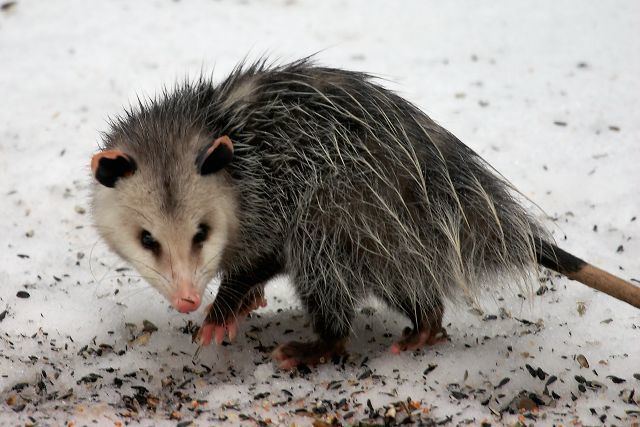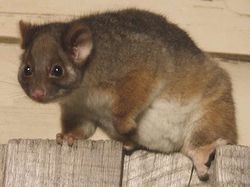Gestation period Sugar glider: 17 days Rank Suborder | Phylum Chordata Scientific name Phalangeriformes Mass Sugar glider: 120 g Length Sugar glider: 16 cm | |
 | ||
Lower classifications Brushtail possum, Phalangeridae, Petaurus | ||
Phalangeriformes
Phalangeriformes is a suborder of any of about 70 small- to medium-sized arboreal marsupial species native to Australia, New Guinea, and Sulawesi (and introduced to New Zealand and China). The suborder includes animals commonly known as possums, gliders, and cuscus. The common name "possum" for various Phalangeriformes species derives from the creatures' resemblance to the opossums of the Americas (the term comes from Powhatan language aposoum "white animal", from Proto-Algonquian *wa·p-aʔɬemwa "white dog"). However, although opossums are also marsupials, Australasian possums are more closely related to other Australasian marsupials such as kangaroos.
Contents

Phalangeriformes are quadrupedal diprotodont marsupials with long tails. The smallest species, indeed the smallest diprotodont marsupial, is the Tasmanian pygmy possum, with an adult head-body length of 70 mm (2 3⁄4 in) and a weight of 10 g (3⁄8 oz). The largest are the two species of bear cuscus which may exceed 7 kg (15 lb 7 oz). Phalangeriformes species are typically nocturnal and at least partially arboreal. They inhabit most vegetated habitats, and several species have adjusted well to urban settings. Diets range from generalist herbivores or omnivores (the common brushtail possum) to specialist browsers of eucalyptus (greater glider), insectivores (mountain pygmy possum) and nectar-feeders (honey possum).

Possum
Classification

About two-thirds of Australian marsupials belong to the order Diprotodontia, which is split into three suborders: the Vombatiformes (wombats and the koala, four species in total); the large and diverse Phalangeriformes (the possums and gliders) and Macropodiformes (kangaroos, potoroos, wallabies and the musky rat-kangaroo). Note: this classification is based on Ruedas & Morales 2005.

In New Zealand
The common brushtail possum was introduced to New Zealand by European settlers in an attempt to establish a fur industry. There are no native predators of the possum in New Zealand, so its numbers in New Zealand have risen to the point where it is considered a serious pest. Numerous attempts to eradicate them have been made because of the damage they do to native trees and wildlife, as well as acting as a carrier of bovine tuberculosis. By 2009, these measures had reduced the possum numbers to less than half of the 1980s levels – from around 70 million to around 30 million animals.
Since 1996, possum fur, obtained from about two million wild-caught possums per year, has been used in clothing with blends of fine merino wool with brushtail possum fur – variously known as Ecopossum, Merinosilk, Merinomink, possumdown, eco fur or possum wool. Possum fur is also used for fur trim, jackets, bed throws, and possum leather gloves.
